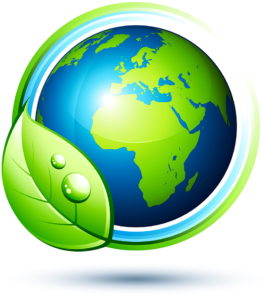UV LED curing technology has arrived. It is no longer an emerging technology, but one that is bringing a host of advanced printing capabilities.
UV LED light sources are suitable for high-speed curing in narrow-web presses and other forms of printing, such as screen, digital and offset, offering many benefits to printers and converters making it an appealing option. Although there is an expense associated with upgrading to UV LED equipment, the return on investment can be quite fast due to the overall cost savings and operating benefits. Here, Phoseon Technology sets the record straight with some of the myths from the industry.
Myth: UV LED is too new and unproven for current use.
Reality: The time to incorporate UV LED is now.
UV LED light sources are quickly becoming standard in printing and coating equipment as the lamps are ideal where larger lamps simply are not practical. Today, tens of thousands of UV LED light sources are reliably running equipment for dozens of applications, including flexographic printing, screen printing, narrow web printing, packaging containers, coatings, adhesives, interior-decor laminates, and large-format inkjet printing. Recent advances in UV LED curing technology and compatible, eco-friendly inks have fostered the development of a new generation of bench-top inkjet printers. These new UV-LED-equipped printers are being used to custom decorate everything from laptop covers, smartphone cases, and pens to golf balls, awards, and water bottles.
With these devices, small sign shops and printing firms can diversify their product lines and enter new markets without having to expand their floor space or expose employees to VOCs harmful UV C radiation, or infrared radiation.
“UV LED curing technology has arrived. It is no longer an emerging technology, but one that is bringing a host of advanced printing capabilities.”
Phoseon Technology
Myth: The choice of inks is limited.
Reality: Virtually all the major vendors offer inks compatible with UV LED lamps.
Today there are a growing number of suppliers developing inks that work well with LED technology; this has resulted in substantial advanced capabilities for UV printing. Material suppliers have responded to the demand, formulating raw materials that absorb energy corresponding to the wavelength of UV LED light sources. The number of ink manufacturers that now offer UV LED inks also continues to grow.
Myth: UV LED does not perform well.
Reality: It offers expanded capabilities. UV LED light sources are ideal
for narrow-web presses, high-speed curing in roll-to-roll screen printing, container
decorating, industrial flatbed presses, and other forms of printing. Users of
UV LED curing systems can process a variety of materials (including thin and
heat-sensitive substrates) at maximum production speeds with low-input power. This
drastically reduces energy consumption and the surface temperature of the
items. Better cures: Users report that UV LED curing lamps produce better cures
and better adhesion on a wide range of materials. They can also achieve higher speeds
with black and white inks. Less heat: The lamps do not radiate infrared waves,
therefore they produce significantly less heat than arc lamps (60 degrees
versus 350 degrees). As a result, chill rolls or plates are not required when printing
on heat-sensitive or thin substrates. Finer controls: On larger presses, UV LED
lamps enable finer controls; operators can choose to turn on only the portion
of the lamp needed for a specific job. More compact designs: Floor space is valuable
in all types of businesses. Compact units can also easily be built into
industrial machines for curing screen-printed inks on plastic and glass
containers.
Myth: UV LED is
an expensive way to ‘go green’
Reality: Regulations are forcing
firms to get serious about safety and sustainability.
The rising tide of government regulations is causing all types and sizes of manufacturing firms to be more proactive in adopting safer, less toxic equipment and processes. This is where UV LED comes in. Besides being mercury-free, UV LED lamps generate no ozone, and about 50 per cent lower CO2 emissions. Studies have shown that in certain applications, replacing mercury lamps with UV LED lamps can lead to 25 tons of CO2 reduction. UV LEDs contribute to workplace safety because they don’t generate dangerous UVC radiation or excessive heat or noise. Companies that have already installed more environmentally sustainable printing processes report that it has helped them attract younger workers and more customers that prefer eco-friendly processes.
Tags: UV LED Technology | UV LED Curing Systems | Converter MagazineCategories: Printing, Digital | Printing, Flexo | Printing, Screen | Adhesives | Coatings | Inks | Manufacturing
